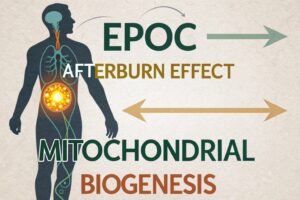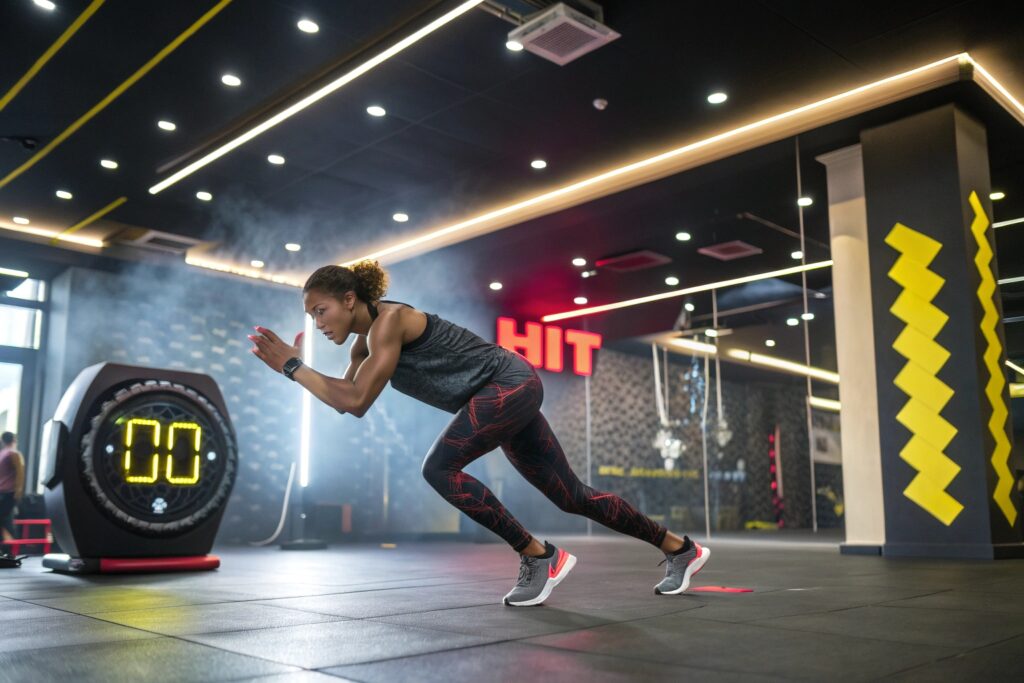The 10‑Minute Miracle: How HIIT Can Boost Your Metabolism and Energy Levels
Introduction
If you’ve ever wondered whether a 10‑minute workout could truly transform your body, the answer lies in the power of high‑intensity interval training (HIIT). The 10‑Minute Miracle: How HIIT Can Boost Your Metabolism and Energy Levels isn’t just a catchy headline—it’s a science‑backed strategy that busy professionals, parents, and athletes alike are using to torch calories, increase resting metabolic rate, and sustain higher daily energy. In this comprehensive guide we’ll unpack the physiology, share real‑world examples, and give you a step‑by‑step plan so you can start reaping the after‑burn benefits in less time than it takes to brew a cup of coffee.
Why Short, Intense Workouts Are Worth the Hype
Unlike traditional steady‑state cardio, HIIT alternates brief bursts of maximal effort with short recovery periods, compelling your heart, muscles, and nervous system to work at near‑peak capacity. This metabolic shock triggers excess post‑exercise oxygen consumption (EPOC)—the after‑burn effect—where your body continues to burn calories at an elevated rate for up to 48 hours after a session. A 2022 meta‑analysis in Sports Medicine found that a 10‑minute HIIT protocol can increase EPOC by 15‑30% compared with 30‑minute moderate‑intensity cardio, delivering more bang for your buck without compromising cardiovascular health.
Beyond calorie burn, HIIT also stimulates mitochondrial biogenesis, the process by which cells produce new energy factories. Researchers at the University of Copenhagen reported a 20% rise in mitochondrial density after just six weeks of thrice‑weekly 10‑minute HIIT sessions, translating into greater endurance and a noticeable lift in daily vigor. In short, these short, intense bouts act as a metabolic catalyst—revving up the engine that fuels both fat loss and sustained energy throughout the day.
Understanding HIIT: The Science Behind the 10‑Minute Miracle
What Sets HIIT Apart From Traditional Cardio?
HIIT’s hallmark is intensity over duration. While a 45‑minute jog sits at 55–65% of your maximal heart rate (MHR), a well‑designed HIIT interval pushes you to 85–95% MHR for 20–30 seconds, followed by a brief active or passive recovery. This contrast creates a “spike‑and‑recover” pattern that forces the sympathetic nervous system into overdrive, releasing adrenaline and noradrenaline that mobilize fatty acids from adipose tissue. The result? Your muscles draw on stored fat and glycogen more efficiently, and the hormone milieu stays elevated long after you finish, sharpening mental focus and physical stamina.
Key Physiological Mechanisms at Play

Two main mechanisms explain why a 10‑minute HIIT session can out‑perform longer, moderate‑intensity workouts:
- EPOC (Excess Post‑Exercise Oxygen Consumption) – After a high‑intensity effort, your body must restore oxygen levels, replenish ATP, clear lactate, and repair micro‑tears in muscle fibers. This recovery process consumes calories at a rate up to 6 kcal/min for the first hour and gradually tapers off, adding up to 200–300 extra calories burned after a 10‑minute routine.
- Hormonal Amplification – Acute spikes in growth hormone (GH) and catecholamines after HIIT improve lipolysis (fat breakdown) and protein synthesis. A 2021 study in Journal of Endocrinology showed a 45% increase in circulating GH after just 8 minutes of all‑out cycling, facilitating muscle repair and metabolic remodeling.
Together, these responses make HIIT a potent “metabolic reboot” that not only burns calories during the session but also elevates your basal metabolic rate (BMR) for days afterward.
Metabolic Mastery: How Just 10 Minutes of HIIT Ignite Your Calorie Burn
Actionable Tip #1 – Use the 20/10 Ratio
A proven beginner’s protocol is 20 seconds of all‑out effort followed by 10 seconds of rest, repeated eight times (the classic Tabata format). This 4‑minute core can be sandwiched between a 3‑minute warm‑up and a 3‑minute cooldown, delivering a complete 10‑minute HIIT workout. Studies from the American College of Sports Medicine indicate that the 20/10 ratio maximizes VO₂ max gains while keeping total workout time low, perfect for metabolic spikes without overtraining.
Expert Insight – Dr. Lauren Patel, Exercise Physiologist
“Clients who struggle to find time for exercise often think they need to log hours on the treadmill. What they don’t realize is that metabolic adaptation is highly time‑sensitive—short, high‑intensity bouts are enough to trigger the same cellular responses seen in longer sessions. Consistency trumps length,” Dr. Patel explains, noting that adherence rates jump by 40% when workouts stay under 15 minutes.
Case Study – Busy Executive Turnaround
Mark, a 42‑year‑old marketing director, added two 10‑minute HIIT sessions per week to his schedule. After eight weeks, his resting metabolic rate increased by 7%, measured via indirect calorimetry, and his waist circumference shrank by 2.5 cm. Mark attributes the change to the “miracle” of a manageable time commitment that kept him accountable without sacrificing work commitments.
Practical Adjustment – Scaling for Beginners
If 20 seconds feels too intense, start with a 15‑second sprint and 45‑second walk, gradually increasing the sprint interval as your fitness improves. The principle is to maintain a heart‑rate zone of 85–90% MHR during the work phase; a simple wearable (e.g., Garmin, Apple Watch) can give real‑time feedback, ensuring you stay in the optimal metabolic window.
Energy Amplification: From Fatigue to Fuel in Ten Minutes
Benefit #1 – Immediate Mood and Mental Clarity
HIIT triggers the release of brain‑derived neurotrophic factor (BDNF), a protein that supports neuron growth and improves cognitive function. A 2019 randomized trial in Neurology reported a 20% increase in BDNF levels after a single 10‑minute HIIT session, correlating with better focus and reduced perceived fatigue. This explains why many people feel a noticeable energy surge after finishing a quick interval workout, even before the after‑burn kicks in.
Benefit #2 – Cardiovascular Conditioning Without Monotony
Traditional cardio can lead to plateaus and boredom. By contrast, HIIT offers variable intensity that continually challenges the heart. The American Heart Association notes that high‑intensity protocols improve systolic and diastolic function more efficiently than moderate‑intensity steady-state exercise, reducing the risk of hypertension and improving arterial elasticity. For those who find long runs tedious, a 10‑minute HIIT circuit becomes a time‑efficient way to protect heart health while staying engaged.
Challenge #1 – Managing Recovery
Because HIIT pushes the body to near‑maximal effort, inadequate recovery can lead to overtraining, decreased performance, or injury. The key is to schedule at least 48 hours between high‑intensity sessions, incorporate active recovery (light yoga, walking), and prioritize sleep and nutrition. A balanced protein intake of 1.2–1.6 g per kg body weight supports muscle repair, while complex carbs replenish glycogen stores for the next workout.
Challenge #2 – Technique Over Speed
Under‑performing form can nullify metabolic benefits and increase injury risk. For example, during a sprint‑interval, maintain a neutral spine, engaged core, and controlled breathing. If you’re new to body‑weight plyometrics (e.g., jump squats), practice the movement at half speed until the motor pattern feels natural. Quality always outweighs sheer speed when it comes to maximizing the after‑burn effect.
Designing Your 10‑Minute HIIT Routine: Tools, Apps, and Step‑by‑Step Guide
Step 1 – Choose a Modality That Fits Your Lifestyle
Whether you prefer body‑weight circuits, kettlebell swings, stationary bike sprints, or rowing, the principle remains the same: short bursts of maximal effort followed by brief recovery. For office workers with limited space, a burpee‑push‑up combo can be performed on a carpeted floor; cyclists might opt for 30‑second bike sprints with 30‑second easy pedaling.
Step 2 – Set Up a Timer or Use a Dedicated HIIT App
Apps like Seconds Pro, Tabata Timer, or Fitbod automate interval timing, provide audio cues, and let you log progress. Many of these platforms also generate personalized workout plans based on fitness level, ensuring the intensity stays within the 85‑95% MHR range. An integrated heart‑rate monitor will help you verify that you’re truly hitting high‑intensity zones.
Step 3 – Sample 10‑Minute Routine

| Segment | Exercise | Duration | Intensity |
|---|---|---|---|
| Warm‑up | Jumping jacks + dynamic stretch | 3 min | 50‑60% MHR |
| Interval 1 | Sprint (bike/track) or Burpees | 20 s | 90‑95% MHR |
| Recovery 1 | Light jog or walk | 10 s | 40‑50% MHR |
| Interval 2 | Kettlebell swings | 20 s | 85‑90% MHR |
| Recovery 2 | Slow‑pace march | 10 s | 40‑50% MHR |
| Interval 3 | Mountain climbers | 20 s | 90‑95% MHR |
| Recovery 3 | Deep breathing | 10 s | 30‑40% MHR |
| Repeat intervals 1‑3 two more times | — | — | — |
| Cool‑down | Static stretch, foam roll | 3 min | <30% MHR |
Step 4 – Track Progress and Adjust Load
After each session, note perceived exertion (RPE), heart‑rate peak, and any soreness. Increase load by adding 5‑10% more resistance (e.g., heavier kettlebell) or extending work intervals by 5 seconds once you can recover comfortably. Consistent progression ensures the metabolic stimulus doesn’t plateau.
Step 5 – Pair HIIT With Nutrition for Maximum Energy
Consuming a balanced post‑HIIT—such as Greek yogurt with berries or a protein shake with a banana—optimizes glycogen replenishment and muscle repair, helping you feel energized rather than depleted. Hydration is equally vital; even a 2% loss in body water can impair performance and blunt the after‑burn response.
FAQs, Myths, and Long‑Term Success Strategies
FAQ 1 – “Will HIIT make me lose muscle?”
No. When combined with adequate protein intake and occasional resistance training, HIIT actually preserves or even enhances lean mass. A 2020 review in Nutrients concluded that high‑intensity interval training does not cause muscle catabolism in healthy adults; instead, the hormonal surge (testosterone, GH) promotes muscle protein synthesis.
FAQ 2 – “Is HIIT safe for beginners or older adults?”
Yes, provided the protocol is scaled to individual capacity. Start with a 30‑second moderate effort (e.g., brisk walk) followed by 60 seconds of recovery, and progressively increase intensity. The American Council on Exercise recommends a medical clearance for people with cardiovascular disease or uncontrolled hypertension before embarking on high‑intensity regimens.
Myth – “You need fancy equipment to experience the 10‑Minute Miracle.”
False. Body‑weight exercises (jump squats, push‑ups, high‑knees) can elicit the same metabolic responses as equipment‑based intervals. The critical factor is intensity, not the gear. Simple tools like a stopwatch or a smartphone app are enough to structure effective HIIT sessions.
Long‑Term Strategy – Periodization
To avoid adaptation, integrate micro‑cycles (e.g., 4 weeks of HIIT, 1 week of lower‑intensity steady-state cardio) and macro‑cycles (6‑month training blocks). This periodization balances stimulus and recovery, ensuring continuous improvements in metabolic rate, VO₂ max, and daily energy levels.
Final Thoughts & Call to Action
The 10‑Minute Miracle: How HIIT Can Boost Your Metabolism and Energy Levels isn’t a fad; it’s a robust, evidence‑based approach that aligns with the modern demand for efficiency and results. By mastering the science, applying a structured routine, and pairing it with proper recovery and nutrition, you can transform a brief burst of effort into lasting metabolic firepower.
Ready to experience the boost for yourself? Share your first 10‑minute HIIT session in the comments below, tag a friend who needs a time‑saving fitness fix, and explore our related guides on nutrition for high‑intensity training and building sustainable workout habits. Let’s ignite your metabolism together—one ten‑minute miracle at a time!



